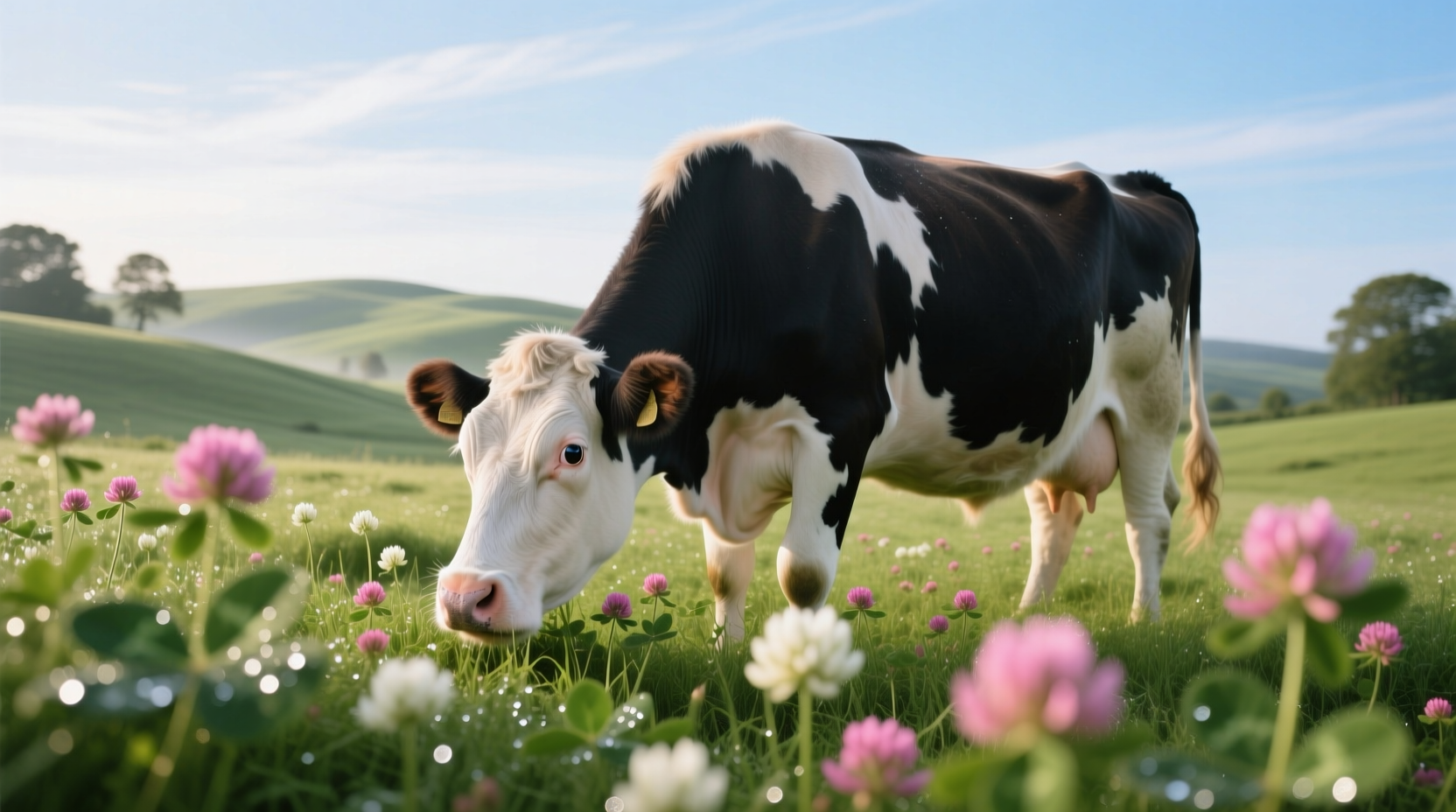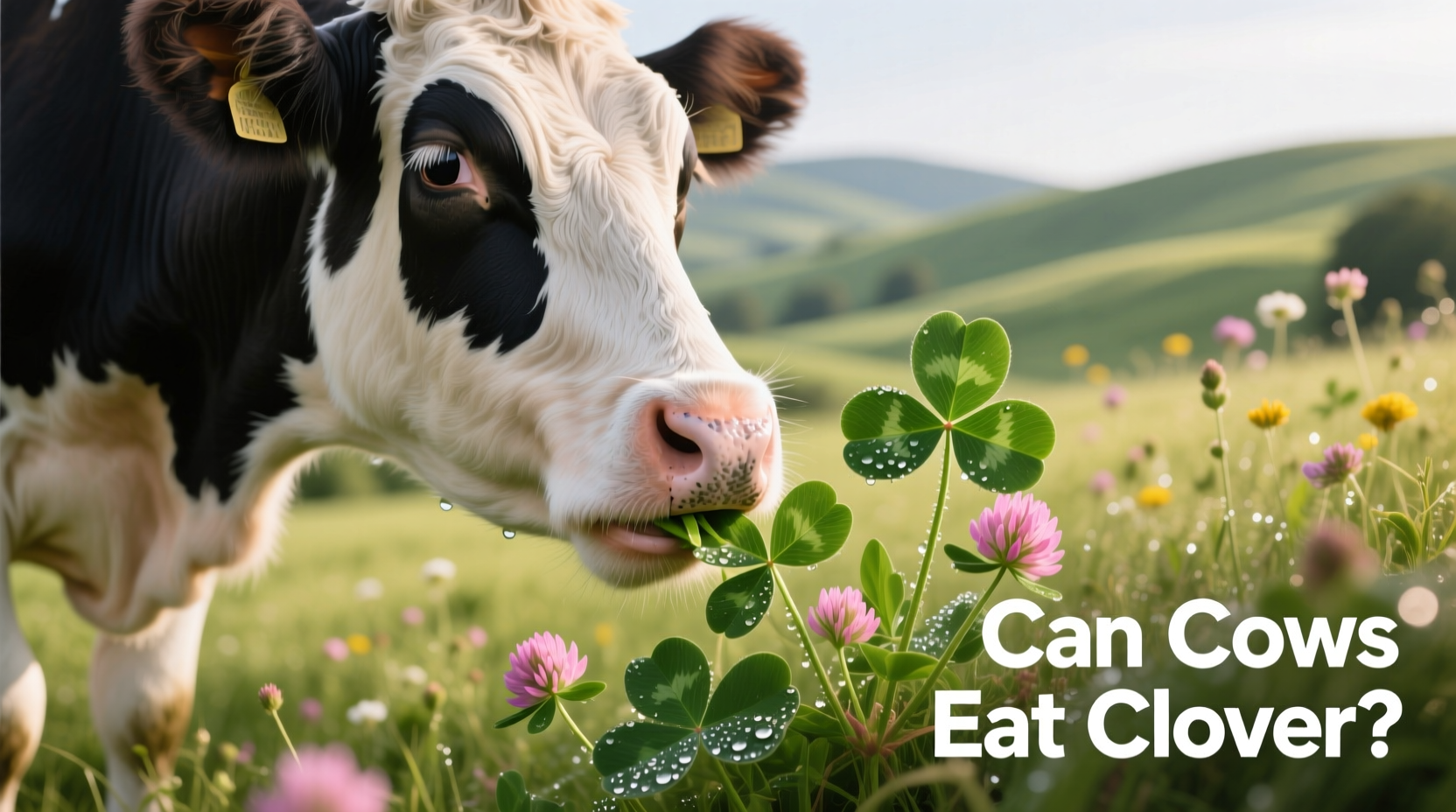For livestock owners and farmers, understanding which forages are safe for cattle is essential for herd health and productivity. Clover represents one of the most valuable pasture legumes worldwide, offering high protein content and nitrogen-fixing capabilities that benefit both animals and soil health. However, not all clovers are created equal when it comes to cattle nutrition.
Why Clover Belongs in Cattle Pastures
Clover provides exceptional nutritional value for grazing cattle, with protein content ranging from 15-25%—significantly higher than most grasses. This legume family member also fixes atmospheric nitrogen into the soil, reducing fertilizer needs while improving pasture sustainability. When properly managed, clover pastures can increase milk production in dairy cows by 10-15% compared to grass-only pastures, according to research from the University of Minnesota Extension.

Clover Varieties: Safety Profiles Compared
| Clover Type | Protein Content | Primary Risk | Safe Grazing Guidelines |
|---|---|---|---|
| Red Clover | 18-22% | Estrogenic effects at high intake | Rotate pastures every 3-4 days |
| White Clover | 15-20% | Bloat potential | Mix with 50% grasses; avoid wet grazing |
| Alsike Clover | 16-21% | Photosensitivity in horses (less risk for cattle) | Generally safe at normal pasture levels |
| Sweet Clover | 12-18% | Bleeding disorders from moldy hay | Avoid feeding moldy hay; test before planting |
Managing Bloat Risk in Clover Pastures
Bloat represents the most immediate danger when cattle graze lush clover pastures, particularly during rapid spring growth. This potentially fatal condition occurs when gas builds up in the rumen faster than the cow can expel it. White clover poses the highest bloat risk due to its high soluble protein content and low fiber.
Effective prevention strategies include:
- Mixing clover with at least 50% grass species in pastures
- Avoiding turnout on wet clover pastures (dew or rain)
- Providing poloxalene feed supplements during high-risk periods
- Gradual introduction to clover pastures over 7-10 days
- Monitoring cattle closely during first grazing periods
Sweet Clover Disease: The Hidden Danger
Sweet clover requires special attention due to its potential to cause hemorrhagic disease. The naturally occurring compound coumarin converts to dicoumarol—a potent anticoagulant—when the plant molds during hay curing. According to the Canadian Food Inspection Agency, sweet clover disease causes internal bleeding that may not show symptoms until fatal blood loss occurs.
Key indicators of sweet clover poisoning include:
- Unexplained bruising or swelling
- Nosebleeds or blood in urine
- Weakness and reluctance to move
- Sudden death without prior symptoms
Prevention focuses on proper hay storage to prevent mold and testing suspect hay before feeding. If feeding sweet clover hay, provide vitamin K1 as a preventative measure under veterinary guidance.
Optimizing Clover Benefits While Minimizing Risks
Implementing strategic grazing management transforms clover from a potential hazard into a nutritional powerhouse. Rotational grazing systems where cattle spend 3 days on a paddock followed by 25-30 days of rest allow clover to mature slightly, reducing bloat risk while maintaining nutritional value. The Penn State Extension recommends maintaining clover at 8-12 inches tall before grazing to optimize both safety and nutrition.
For mixed pastures, aim for 30-40% clover composition. This balance provides sufficient protein boost without excessive bloat risk. During high-risk periods like spring growth or after rainfall, consider providing hay before turnout to reduce aggressive grazing on lush clover.
When Clover Becomes Problematic: Recognizing Warning Signs
While most clover varieties are safe when managed properly, certain conditions increase risks significantly:
- Mold development in sweet clover hay (wait at least 6 weeks after cutting before baling)
- Overgrazing of immature clover (maintain minimum 3-inch stubble height)
- Continuous grazing without rotation (implement 30-day rest periods)
- Mixed with certain grasses like timothy that increase bloat risk
Immediate veterinary consultation is recommended if you observe excessive salivation, labored breathing, or sudden behavioral changes in cattle grazing clover pastures.
Practical Implementation Guide
Follow this step-by-step approach for safe clover integration:
- Test your pasture - Identify clover varieties present using extension service resources
- Assess risk factors - Consider recent weather, growth stage, and pasture composition
- Prepare cattle - Provide grass hay before first turnout to clover pastures
- Monitor closely - Watch for early bloat symptoms during initial grazing periods
- Rotate strategically - Move to new paddock before clover is grazed below 3 inches
- Supplement when needed - Use poloxalene blocks during high-risk periods
Frequently Asked Questions
How much clover can cows safely eat per day?
Cows can safely consume clover comprising up to 40% of their total forage intake when properly managed. During high-risk periods like rapid spring growth, limit clover to 25% of pasture composition. The University of Wisconsin advises against allowing cattle to graze pure clover stands, recommending instead a balanced mix of 60% grasses and 40% legumes for optimal safety and nutrition.
What are the first signs of bloat in cattle grazing clover?
Early bloat symptoms include visible swelling on the left side of the abdomen, restlessness, frequent urination, and labored breathing. As bloat progresses, cattle may kick at their belly, grunt, or stand with an arched back. Severe cases show extreme distress with rapid breathing and staggering. Immediate intervention is critical—contact your veterinarian immediately if you observe these symptoms, as death can occur within 1-2 hours without treatment.
Can dairy cows eat clover without affecting milk production?
Yes, dairy cows can safely consume clover and often show improved milk production due to its high protein content. Research from Cornell University shows dairy herds grazing mixed clover-grass pastures produce 8-12% more milk than those on grass-only pastures. However, avoid sudden transitions to clover-rich pastures, as this can temporarily reduce milk fat content. Gradual introduction over 7-10 days prevents digestive upset while maximizing production benefits.
Is red clover better than white clover for cattle?
Both varieties offer benefits with different risk profiles. Red clover provides higher protein (18-22% vs 15-20%) and persists better in rotational grazing systems, but contains isoflavones that may affect reproduction at very high intakes. White clover spreads more aggressively and offers excellent ground cover, but carries higher bloat risk. For most operations, a mix of both varieties (30% total legume content) provides optimal nutrition while minimizing risks, according to USDA Agricultural Research Service recommendations.
How do I prevent sweet clover disease in my herd?
Prevent sweet clover disease by avoiding moldy sweet clover hay—properly cured hay should have less than 15% moisture before baling. If feeding sweet clover hay, test for dicoumarol levels using your local extension service. When mold is suspected, provide vitamin K1 supplements under veterinary guidance. The Canadian Food Inspection Agency recommends waiting at least six weeks after cutting before baling sweet clover to allow proper drying and prevent mold development that converts coumarin to dangerous dicoumarol.











 浙公网安备
33010002000092号
浙公网安备
33010002000092号 浙B2-20120091-4
浙B2-20120091-4